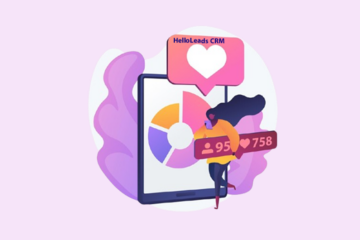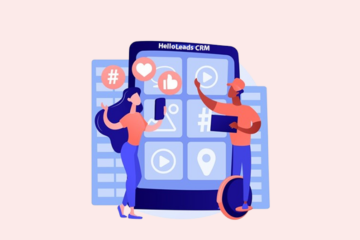
In the past few months, the buzz around ChatGPT has been hard to miss ever since OpenAI made it available to the public. If you’re someone like me, you’re probably one of the 100 million users who have experienced its remarkable capabilities first hand. Personally, I’ve relied on this AI chatbot for a multitude of tasks, including generating article ideas, brainstorming content for upcoming email campaigns, and crafting impactful taglines for our CRM product, among many others. The versatility and usefulness of this chatbot seem to have no bounds.
Although we are becoming familiar with crafting effective prompts to elicit the best responses, we can’t ignore the fact that ChatGPT does have its limitations. One major drawback is that its training data encompasses only until September 2021, which means it may not be up-to-date with the latest news and trends.
This is where Google’s Bard makes a key difference.
In a major announcement, Google has now made its remarkable AI chatbot Bard accessible to users in more than 180 countries. This move by the tech giant comes with an array of new features that are set to elevate the user experience to new heights. Interestingly, this development coincides with the widespread recognition of OpenAI’s ChatGPT, which has been making significant strides across various industries, thanks to its impressive capabilities.
Back in March 2023, Google introduced Bard as a direct competitor to ChatGPT, which has gained significant traction for its ability to provide comprehensive and human-like responses to prompts in natural language. Since its debut, Bard has managed to captivate the interest of countless tech enthusiasts, inevitably sparking comparisons with the consistently popular ChatGPT.
During the recent developers’ conference on May 10, Google made an impressive move by unveiling Bard to the world, bringing its extraordinary AI chatbot accessible to users everywhere, right at their fingertips. To enhance its competitive edge, Google also introduced a range of exciting upgrades, ensuring that Bard remains at the forefront of innovation. The best part is that Bard is completely free to use and can be accessed directly.
With the availability of both Bard and ChatGPT, let’s delve into how Google’s chatbot is constantly pushing the boundaries through experimentation, edging closer to surpassing OpenAI’s creation. ’It’s time to explore the exciting advancements of Google’s chatbot and how it’s poised to hog the spotlight in the AI landscape.
1 . Bard and its internet browsing capabilities
By default, ChatGPT does not have access to search internet in real-time. However, Google Bard distinguishes itself by having internet access, which grants it a clear advantage over its OpenAI counterpart. Bard’s training involves an extensive dataset comprising of text and code, including valuable information sourced from the internet. This unique characteristic enables the chatbot to provide comprehensive and informative responses, capable of addressing queries, sharing the latest news updates, and fetching information directly from the web.
We tried asking Bard to show the Official website of the CRM – HelloLeads. We also prompted ChatGPT to retrieve the same. Here are both the responses of each chatbot.


Further, we asked Bard to list out the top news of the week. While it is essential to highlight that Bard listed some news items, it is important to note that certain entries were considerably inaccurate. It is crucial to acknowledge that Bard is currently in an experimental stage, implying that further refinement and improvements can be expected in the future. The chatbot accompanies a disclaimer, prominently stating, “Bard may display inaccurate or offensive information that doesn’t represent Google’s views,” located right beneath the text input box.
2 . Prompt Bard using images
Perhaps, the standout feature of Bard is its ability to utilize images as prompts or even leverage Google Lens to scan images for the same purpose. For example, should you come across an unfamiliar plant in your garden, you can simply take a photo and inquire with Bard to obtain its name and care instructions. This represents a significant advancement in enhancing prompts on AI chatbots, signifying a notable stride forward in the field.
3 . Bard accepts Voice input

ChatGPT falls behind when it comes to image and voice prompts, but Google’s Bard stands out by offering these innovative features to its users. The introduction of voice prompts marks a groundbreaking development, potentially making Bard the first AI chatbot to utilize voice as an input method, effectively surpassing its competitors.
With Bard, engaging through voice commands becomes a seamless and convenient experience, especially in certain scenarios. For instance, when you’re on the move, engaged in activities that require the use of your hands, or simply prefer verbal communication over typing, voice input emerges as the ideal solution.
Moreover, voice input proves invaluable for dictating lengthy texts or presenting complex questions, thereby expanding the possibilities of interaction to a greater extent.
4 . Bard may be available on your mobile devices
One of the notable drawbacks of ChatGPT, which can be considered its most significant disadvantage, is its current lack of accessibility through a dedicated mobile version. However, it is important to note that this limitation may change in the future. Although users have been resorting to accessing ChatGPT through smartphone browsers, the ultimate convenience is offered by a dedicated mobile application. On the other hand, Google Bard may not be available as a standalone smartphone application, but the search giant has exciting plans to integrate this chatbot into its various Google apps and services.
This integration guarantees accessibility for smartphone users, unlocking a plethora of possibilities for seamless interaction with Bard within the familiar Google platforms, thereby enhancing the overall user experience.
5 . Share your prompt outcomes to Gmail and Docs

This exciting upcoming feature in Google Bard is set to revolutionize how users share their results with their friends and colleagues. With just a few simple clicks, users can now effortlessly export their findings to Gmail and Docs, bringing forth an exceptional level of convenience when it comes to composing emails and collaborating on documents. While ChatGPT already offers various extensions for similar tasks, Bard stands out by providing built-in export capabilities, ensuring a hassle-free experience for users. So, get ready to effortlessly share your Bard-generated content with the world!
In the era of AI-driven chatbots, technology giants such as Microsoft, Google, and Meta are engaged in fierce competition, striving to deliver the most advanced and robust versions of their AI chatbot offerings, vying for supremacy in this rapidly evolving field. OpenAI’s ChatGPT, which made a huge impact upon its launch in November 2022, ignited this competitive race. However, Google has now wholeheartedly dedicated itself to delivering the most advanced AI chatbot experience, leaving no stone unturned in its pursuit of innovation and excellence.
Share this blog :










